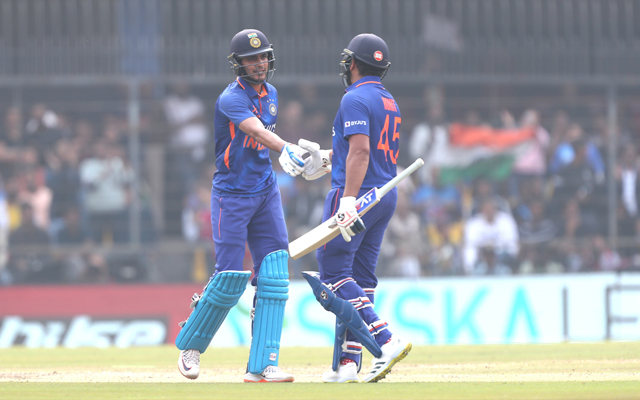Harbhajan Singh, a former Indian cricketer known for his sharp insights into the game, recently made a noteworthy comment regarding Pakistan’s pace bowling attack. In just a single sentence, he encapsulated a critical aspect of cricket: the ever-shifting dynamics of pressure and its profound impact on the performance of a bowling attack.
In the realm of cricket, a “world-class bowling attack” is the epitome of a team’s strength. It represents the ensemble of bowlers who possess the skill, speed, and accuracy to dismantle the opposition’s batting lineup.
Pakistan, historically, has been celebrated for producing some of the finest fast bowlers in the sport’s history. Names like Wasim Akram, Waqar Younis, and Shoaib Akhtar are etched in cricketing folklore. However, Harbhajan Singh’s comment suggests that the prowess of even the most celebrated bowling attack can crumble under the weight of pressure.
In cricket, pressure is a multifaceted entity. It can manifest in various forms, such as the scoreboard pressure when a team has posted a substantial total or the pressure of expectation from fans and pundits. The ability to handle this pressure is what distinguishes the great from the good. Pakistan’s pace battery, often lauded for its speed and swing, is not immune to these pressures.
When the momentum of a game shifts, and the opposition begins to dominate, even the most talented bowlers can find themselves struggling. Their line and length may waver, their pace may drop, and their effectiveness diminishes. This is where Harbhajan Singh’s observation gains significance.
“India have to make sure that Shaheen does not get wickets” – Harbhajan Singh
In the intense cauldron of international cricket, maintaining composure under duress is paramount. The ability to thrive in high-pressure situations defines a world-class bowling attack. It’s not just about delivering fast, swinging deliveries; it’s about maintaining consistency and precision when the stakes are at their highest.
“India have to make sure that Shaheen does not get wickets. If he does not get wickets, then the pressure will be on the other bowlers,” Harbhajan continued. “When the pressure will shift, then the so-called World Class bowling attack will be all over the place. If India are batting first, then they should aim to score around 300 runs.”
The unpredictability of cricket is a testament to its beauty. A bowling attack that appears unstoppable one moment can become vulnerable the next. This ebb and flow, this delicate balance between dominance and vulnerability, is what makes cricket such a captivating sport. Harbhajan Singh’s remark serves as a reminder that in cricket, as in life, the only constant is change.
It underscores the importance of mental fortitude and adaptability in the face of shifting pressures. Pakistan’s pace battery, like any other, will continue to evolve, and their success will depend not only on their physical abilities but also on their mental resilience. In a sport where fortunes can change with a single delivery, the ability to stay calm under pressure is the true hallmark of a world-class bowling attack.
“If Rohit Sharma and Shubman Gill play out the first 15 overs against the new ball, then I don’t think India will be in any kind of trouble. It is important that Gill, Rohit and Kohli play well, they will have to keep their ego aside while facing the Pakistan pacers with the new ball. Even if you don’t score runs off Shaheen initially, it is totally fine,” he concluded.
Get the latest cricket news here, like us on Facebook, and follow us on Twitter and Instagram for more such updates

